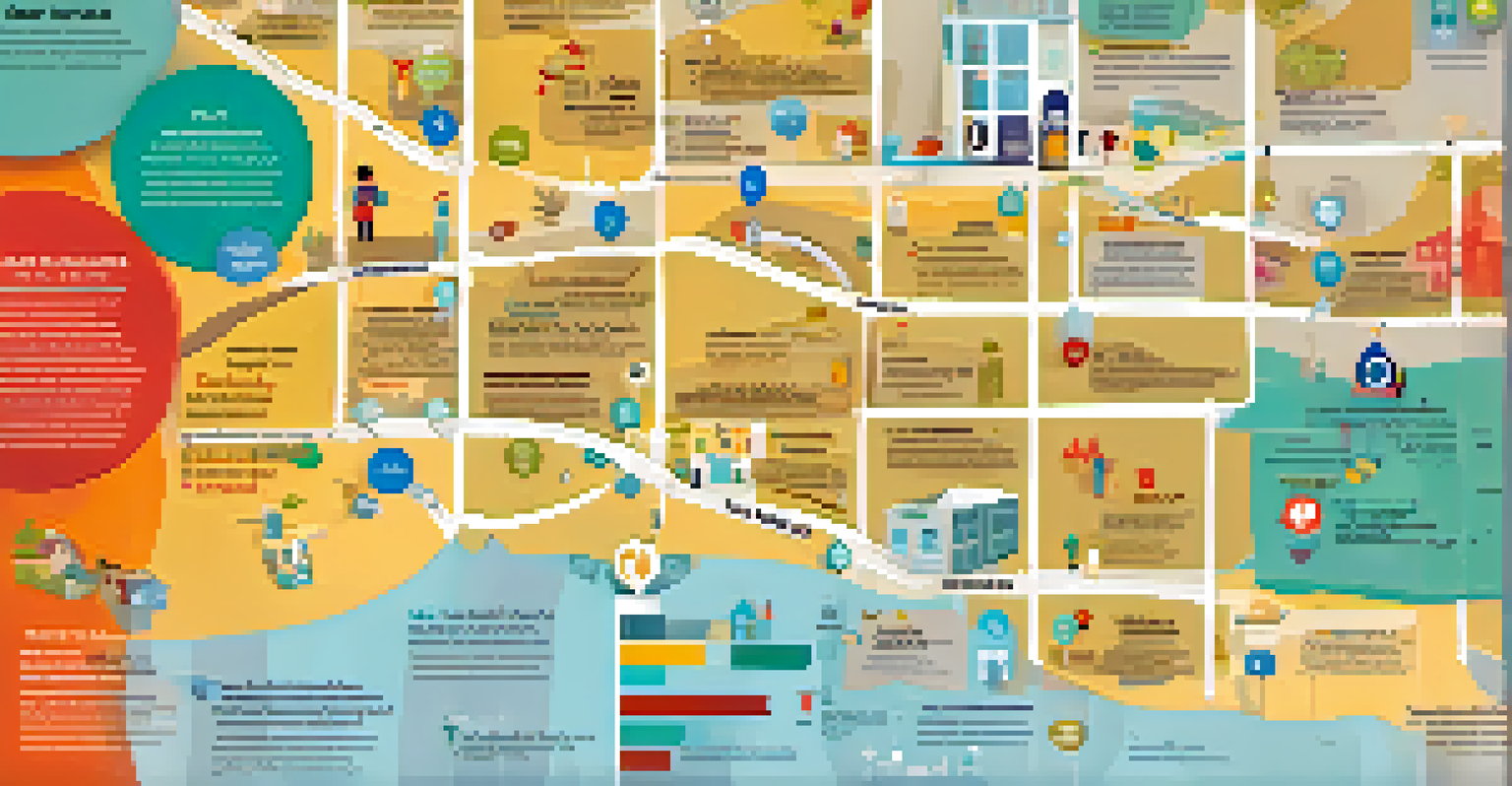Cultural Competency in Addressing Health Disparities

Understanding Cultural Competency in Healthcare
Cultural competency in healthcare refers to the ability of providers to understand and respond effectively to the cultural and language needs of patients. This means recognizing the diverse backgrounds, beliefs, and values that patients bring to the healthcare experience. For instance, a healthcare provider who understands the significance of family in certain cultures can create a more inclusive environment for their patients.
Cultural competence is a process that requires continuous self-assessment and a willingness to learn from others.
When healthcare professionals are culturally competent, they can build trust with patients, which is vital for effective communication and treatment adherence. This trust often leads to patients feeling more comfortable sharing their health concerns and histories. Consequently, this can lead to better health outcomes and a reduction in disparities.
Incorporating cultural competency into healthcare training not only benefits patients but also enhances the overall effectiveness of healthcare systems. It allows for tailored approaches to care that respect individual patient needs, ultimately fostering a more equitable healthcare landscape.
The Impact of Health Disparities on Communities
Health disparities are differences in health outcomes and access to healthcare that often affect marginalized communities. These disparities can stem from various factors, including socioeconomic status, geography, and systemic barriers. For example, individuals living in rural areas may struggle to access specialized care, leading to worse health outcomes compared to their urban counterparts.

Moreover, health disparities can perpetuate cycles of poverty and ill health within communities. When certain groups do not receive adequate healthcare, it not only affects their physical well-being but also their economic stability. This creates a ripple effect that can hinder the overall progress of entire communities.
Cultural Competency Builds Trust
Understanding and addressing patients' cultural needs fosters trust, improving communication and health outcomes.
Addressing these disparities requires a multifaceted approach that considers the unique needs of different populations. By understanding these needs, healthcare providers can implement strategies that improve access and quality of care for all individuals, regardless of their background.
Barriers to Providing Culturally Competent Care
Despite the importance of cultural competency, multiple barriers prevent its effective implementation in healthcare settings. One significant barrier is the lack of training for healthcare providers on cultural issues and biases. Without this training, providers may unintentionally perpetuate stereotypes or fail to recognize the unique needs of their patients.
Health disparities are not just a health issue; they are a social injustice that requires a concerted effort to address.
Another challenge is the limited availability of interpreters and resources for non-English speaking patients. This can lead to misunderstandings, misdiagnoses, and a lack of trust in the healthcare system. For instance, a patient who cannot effectively communicate their symptoms is at a disadvantage in receiving appropriate care.
Additionally, systemic issues such as funding disparities and institutional racism can hinder efforts to promote cultural competency. Addressing these barriers involves a commitment to systemic change within healthcare organizations, ensuring that cultural competency is prioritized and integrated into every aspect of patient care.
Strategies for Enhancing Cultural Competency
To improve cultural competency in healthcare, organizations can implement targeted training programs for their staff. These programs should focus on communication skills, understanding cultural differences, and addressing personal biases. Incorporating role-playing scenarios can help providers practice these skills in a safe environment, preparing them for real-life encounters.
Another effective strategy is to create diverse healthcare teams that reflect the communities they serve. Having team members from various cultural backgrounds can enhance understanding and empathy, leading to better patient interactions. For instance, a diverse team can offer insights into specific cultural practices that may influence health decisions.
Health Disparities Require Attention
Addressing health disparities is crucial for ensuring equitable access to healthcare for marginalized communities.
Lastly, healthcare organizations should actively seek patient feedback to gauge the effectiveness of their cultural competency initiatives. By listening to patients' experiences, providers can identify areas for improvement and adapt their approaches accordingly, fostering a culture of continuous learning and growth.
The Role of Community Engagement in Healthcare
Community engagement is essential in addressing health disparities and fostering cultural competency. By involving community members in health-related discussions and decision-making, healthcare providers can gain invaluable insights into the needs and preferences of diverse populations. This engagement helps to build trust and ensures that healthcare services are relevant and accessible.
One example of effective community engagement is the establishment of health advisory boards composed of local residents. These boards can provide feedback on healthcare initiatives, helping organizations tailor their services to better meet community needs. This collaborative approach not only empowers individuals but also strengthens the healthcare system as a whole.
Moreover, community partnerships can facilitate outreach programs that educate populations about available healthcare resources. By working alongside community leaders and organizations, healthcare providers can raise awareness about preventive care and services that address specific health disparities, ultimately leading to improved health outcomes.
Measuring the Success of Cultural Competency Initiatives
To determine the effectiveness of cultural competency initiatives, healthcare organizations must implement measurable outcomes. This can include tracking patient satisfaction scores, health outcomes, and rates of health disparities over time. By analyzing this data, organizations can assess whether their efforts are making a tangible difference in patient care.
Another approach is to conduct regular assessments and evaluations of cultural competency training programs. Gathering feedback from participants can help identify strengths and weaknesses, guiding future improvements. For example, if a specific training module receives low ratings, it may need to be revised or replaced with more relevant content.
Community Engagement Enhances Care
Involving community members in healthcare decisions leads to more relevant services and improved health outcomes.
Additionally, organizations should strive to cultivate a culture of accountability regarding cultural competency. By setting clear goals and expectations, healthcare providers can work collaboratively to ensure that everyone is committed to improving care for diverse populations.
The Future of Healthcare: A Culturally Competent Approach
As our society becomes increasingly diverse, the need for culturally competent healthcare will only grow. Moving forward, healthcare organizations must prioritize cultural competency as a fundamental aspect of patient care. This means not only providing training but also fostering an environment where diversity is celebrated and integrated into everyday practices.
Embracing technology can also enhance cultural competency efforts. For example, telehealth services can improve access for underserved populations, allowing them to connect with providers from the comfort of their homes. This can be particularly beneficial for individuals in remote areas or those with mobility challenges.

Ultimately, a culturally competent approach to healthcare will lead to better health outcomes, reduced disparities, and a more equitable system for all. By acknowledging and addressing cultural differences, healthcare providers can create a truly inclusive environment that benefits everyone involved.